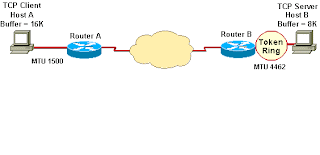PPP vs HDLC and L3 switch vs Router
Difference between PPP and HDLC : ================================= 1 . Authentication : PPP supports the authentication and HDLC does not support the authentication 2 . Fragmentation Handling : PPP handles the fragmented packets in better way . Jitter can be controlled more effectively by PPP 3 . Compression Support : PPP supports the compression and HDLC does not support the compression 4 . Standard : PPP is OSI standard protocol and HDLC is cisco proprietary protocol 5 . Deployment : PPP is used in async dial up networks . eg PPPoE , PPPoA . So it is used in LAN HDLC is used in point to point serial links. It is used in WAN Difference between L3 switch and Router : ========================================= 1 . Switching speed : L3 Switch does the hardware switching using ASIC . So it is faster . Router does the software switching using microprocessors and device drivers...



